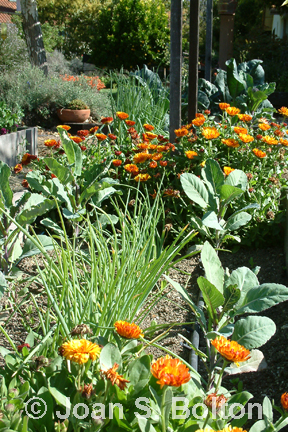
A perfect match.
Whether green onions with broccoli or basil with tomatoes, certain pairings in the garden are just meant to be. Or in the case of beans, corn and squash, a threesome is fine, too.
Companion planting has been around for centuries, long before applying commercial chemicals in the garden became a modern way to grow ample crops. Folks who relied on food from their gardens couldn’t afford to lose their cucumbers to beetles or their cabbage to moths. So they turned to pairings that relied on the natural qualities of various plants to control pests, attract beneficial insects and encourage vigorous, healthy growth. While there might not have been scientific proof, the combinations simply worked.
One of my first forays into companion planting was some 20 years ago, after a particularly persistent pack of fuzzy, gray aphids decimated my broccoli. Determined to not let that happen again, yet equally determined not to drench my broccoli with pesticides, I planted green onion sets between the rows on my next go-round.
The result was downright miraculous. The onions’ scent deterred the aphids from moving in and my broccoli florets were fresh, plump, green and nearly aphid free. I’ve paired green onions with broccoli ever since. There is still the occasional intruder. But I’ve never lost another crop.
Indeed, that’s one of the caveats about companion planting — you may still see a little damage. But it’s a great first line of defense against wholesale devastation.
Edible Matchups
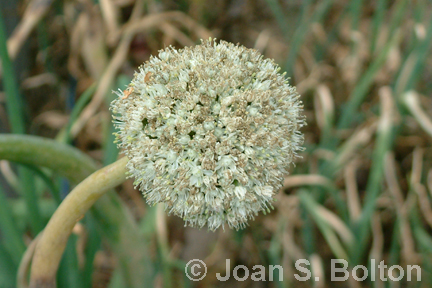
The best partnerships are those that join up edibles that are mutually beneficial in one way or another, be it a pungent scent, adding nutrients to the soil or simply coexisting as pals because the plants are content to share the same, precious space.
The matchups can be tricky. On the one hand, odiferous onions are good neighbors to all sorts of vegetables, from other root crops such as beets, carrots, kohlrabi, leeks and potatoes, to above-ground broccoli, cabbage, lettuce, strawberries and tomatoes.
Yet plant potatoes and tomatoes together and both may suffer from blight. Also, onions do not grow well with beans, peas or asparagus. Planting them together may stunt everyone’s growth. But that doesn’t mean you should avoid planting beans and peas with other onion companions. To the contrary, many are quite compatible. In addition, beans and peas enrich the soil for corn, cucumber, eggplant, pumpkin and squash.
For this, look no further than the traditional Iroquois Indian “Three Sisters,” a synergistic matchup composed of corn, beans and squash. The stiff cornstalks provide a pole for the beans to climb; the beans fix nitrogen in the soil; and the squash bears large leaves that shade the soil and hold in moisture, while its shallow roots don’t dive deep enough to compete with the beans or corn. What’s more, the trio squeezes into a remarkably small footprint.
Similar matchups, where one edible happily cozies up and clambers over another, include pole beans twining up tall sunflowers, and cucumber or pumpkin vines rippling through rows of corn.
On a smaller scale, I like to sow fast-growing lettuces between broccoli and cauliflower. The leafy greens are ready to harvest well before the broccoli and cauliflower fill in.
Aromatic Herbs and Flowers
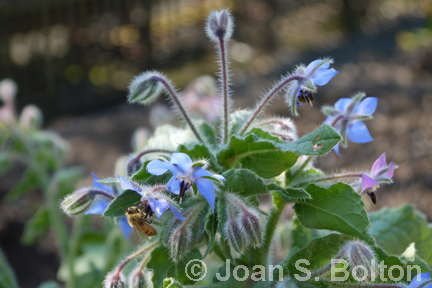
Herbs have been major players in kitchen gardens for generations, with many offering a solid contribution well before they reach the table.
For instance, it’s no secret that fresh-picked basil is a perfect complement to fresh-picked tomatoes. Less-known, perhaps, is that planting the two of them together boosts their vigor and taste. Basil plants also help deter flies and mosquitoes — though admittedly, in a relatively small area.
Other go-to herb companions include sweet-tasting borage, which repels tomato hornworms and attracts honeybees to help pollinate your garden. Catnip reduces populations of ants, aphids, squash bugs and weevils. Chamomile, chervil, fennel and hyssop all attract beneficial wasps and hoverflies, which feast on aphids and thrips.
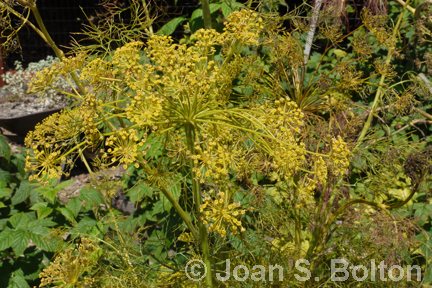
Dill also attracts hoverflies and wasps, plus deters aphids and spider mites. However, be warned that it may attract tomato hornworms as well, so keep it away from your tomatoes. Rosemary inhibits bean beetles, cabbage moths and carrot flies. Thyme repels cabbage loopers, cabbage worms and whiteflies.
For years, I’ve mixed scented marigolds and calendulas among just about all my vegetables.
The marigolds seem to help keep my tomatoes healthy and produce over a longer period of time. They protect against many insects, including whiteflies. They attract beneficial hoverflies. They look pretty. Meanwhile, below ground, the roots reduce nematodes. The thready, parasitic worms infest the flowers’ pungent roots. Then the roots prevent the nematodes from reproducing, drastically limiting their numbers. If you have trouble with nematodes and possess enough patience, consider planting marigolds in your vegetable bed a year prior to planting vegetables.
However, once again, be warned that marigolds aren’t perfect companions for everyone. They are not compatible with cabbage and beans, and they can attract spider mites and slugs.
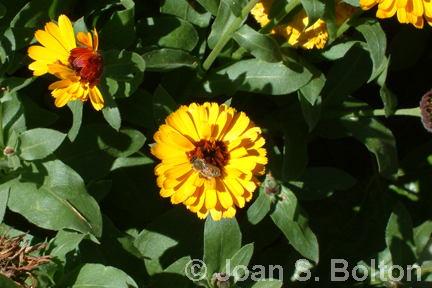
Calendulas are not as fragrant as marigolds, but they still deter tomato hornworms and asparagus beetles. Also consider planting nasturtiums. The exuberant, spicy-scented sprawlers reduce cabbage worms and squash bugs. And the flowers serve as a magnet for aphids, which can actually be a good thing. By acting as decoys, they lure away the soft-bodied pests from neighboring plants.
≈
This article was first published in Edible Santa Barbara.
Copyright, Joan S. Bolton. All rights reserved. Reproduction of text or photos in any form is prohibited without written permission.
≈
